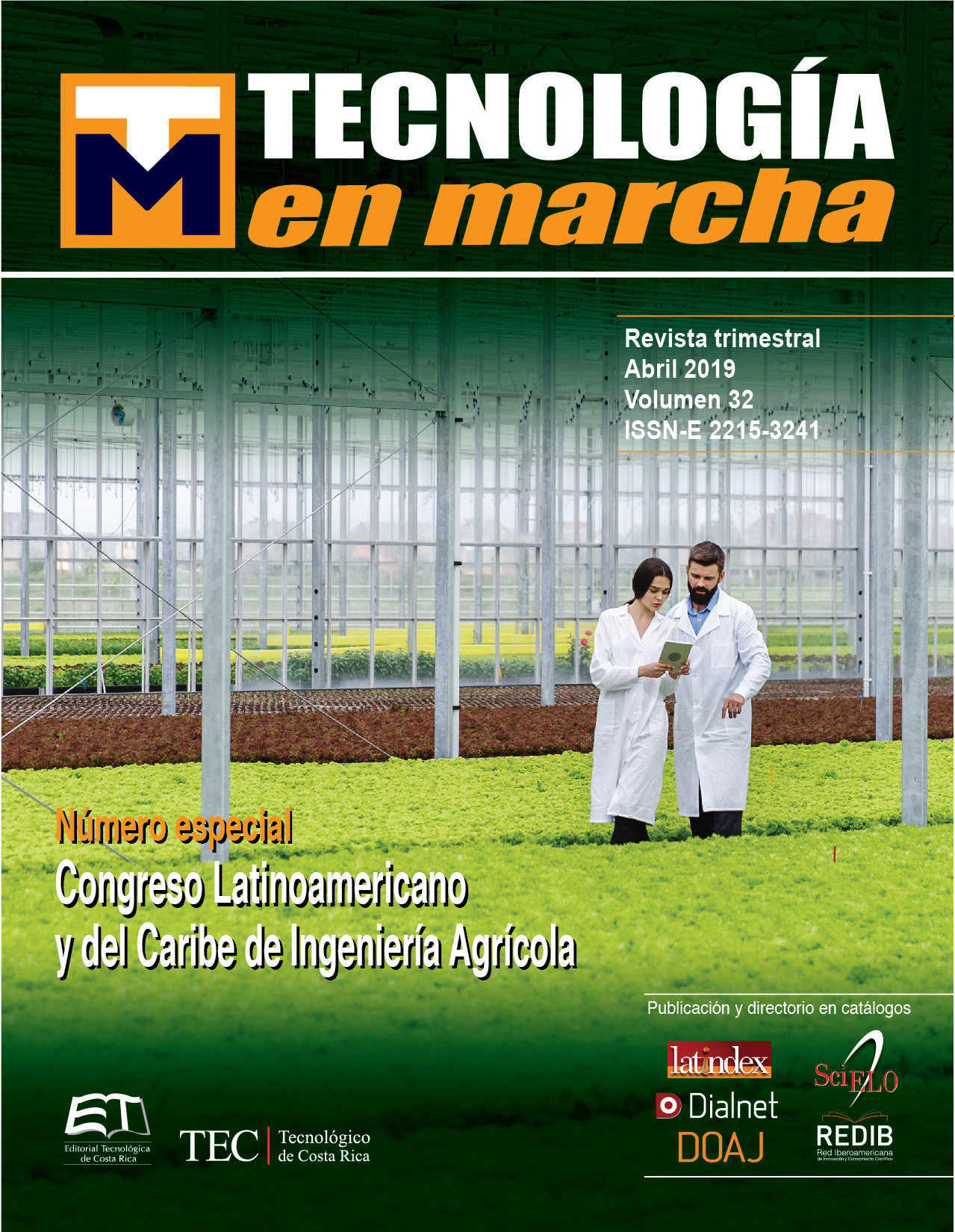Radicular development and corn leaf (zea mays) under different types of subsolation
Main Article Content
Abstract
The physiological factors that determine the productivity of a crop are influenced by soil compaction. The objective of this work was to evaluate the effect of two types of subsoil in the development of corn and the resistance of a Red Nitosol to penetration. The experiment was carried out in 3 plots of 0,5 ha each, with treatments: minimum cultivation with subsoiler equipped with cutting disc and ripper roller (CMd), minimum cultivation with conventional subsoiler (CMc) and no-tillage system (SPD) as witness. The mean mechanical strength of the soil at the penetration (RP) of 0-0,30 m, plant height, dry mass and maize productivity were measured through a sample mesh of 6 points per plot. Mean RP ranged from 0,51-2,01 MPa in CMc, versus 1,26-1,76 MPa in CMd, while SPD ranged from 1,01-1,76 MPa. The height of plants was better in the minimum cultivation, and in CMd ranged from 1,87-2,09 m, compared to 1,65- 2,09 m in CMc, and 1,76-1,98 m, demonstrated better conditions for CMd. The root dry mass was lower in SPD, 30-60 g plant-1, CMd increased in the lower limit, showing a variation of 40-60 g plant-1, and an increase in CMc, of 30-70 g plants-1. Maize productivity was higher in CMd, followed by CMc and SPD, ranging from 10,2 to 17,7 Mg ha-1, at 8,70-17,70 Mg ha-1, and 8,7 to 11,7 Mg ha-1 respectively, demonstrating that the disc subsoiler generates better conditions for corn development.
Article Details
Los autores conservan los derechos de autor y ceden a la revista el derecho de la primera publicación y pueda editarlo, reproducirlo, distribuirlo, exhibirlo y comunicarlo en el país y en el extranjero mediante medios impresos y electrónicos. Asimismo, asumen el compromiso sobre cualquier litigio o reclamación relacionada con derechos de propiedad intelectual, exonerando de responsabilidad a la Editorial Tecnológica de Costa Rica. Además, se establece que los autores pueden realizar otros acuerdos contractuales independientes y adicionales para la distribución no exclusiva de la versión del artículo publicado en esta revista (p. ej., incluirlo en un repositorio institucional o publicarlo en un libro) siempre que indiquen claramente que el trabajo se publicó por primera vez en esta revista.

